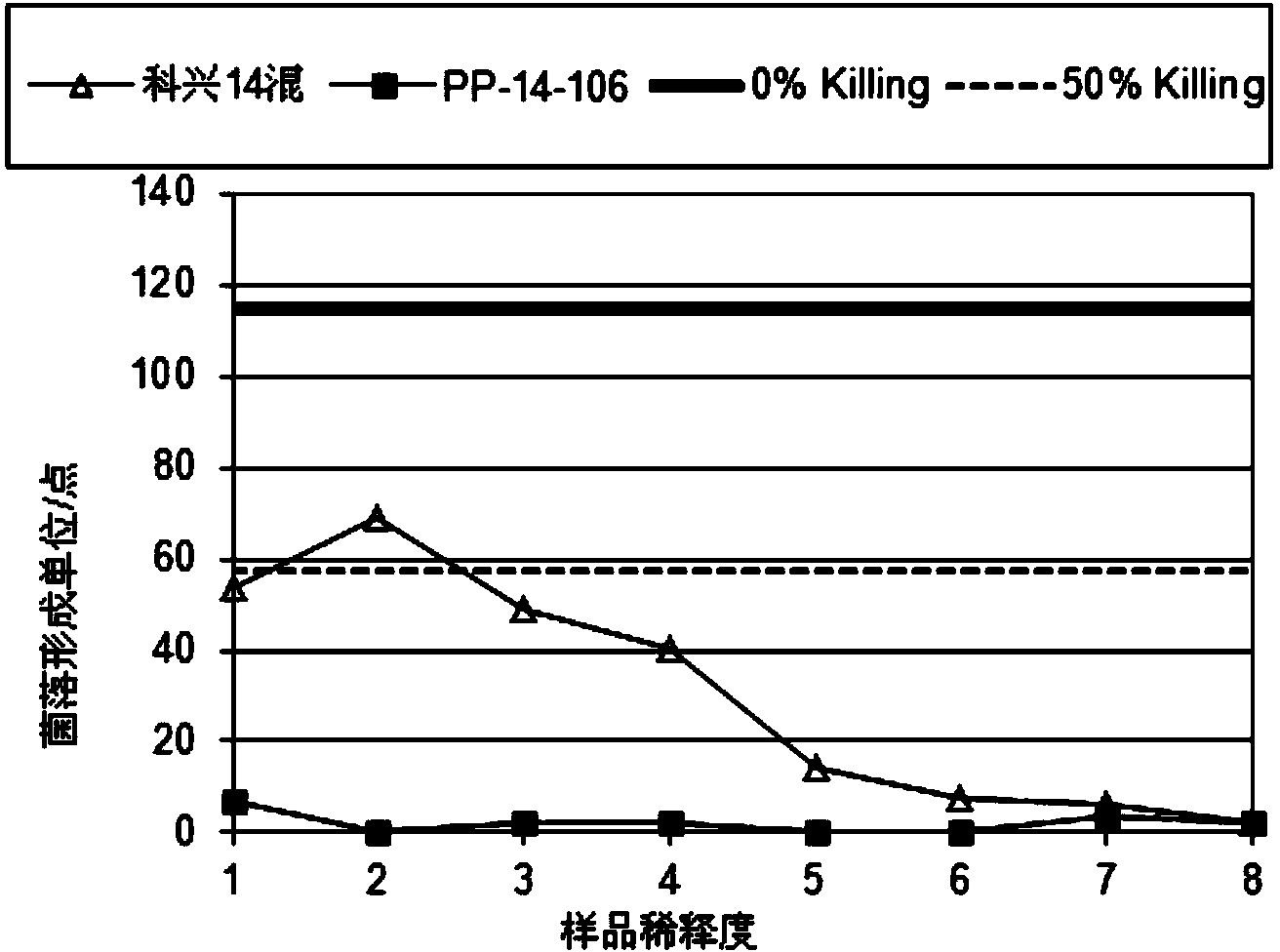14 type pneumococcal neutralizing monoclonal antibody and application
A monoclonal antibody and pneumococcal technology, applied in the field of immunology and vaccinology, can solve the problems of low antibody level, high purchase cost, large dosage, etc., and achieve good specificity, good type specificity and potency, and high efficiency price effect
- Summary
- Abstract
- Description
- Claims
- Application Information
AI Technical Summary
Problems solved by technology
Method used
Image
Examples
Embodiment 1
[0036] Embodiment 1 immunogen preparation and animal immunization
[0037] (1) Soybean peptone comprehensive medium was used to ferment the bacterium of type 14 pneumococcus strain 31602 (sourced from China Medical Bacteria Collection and Management Center).
[0038] (2) After fermentation, add formalin to the fermented cells to a final concentration of 2%, and sterilize overnight at 2-8°C.
[0039](3) Centrifuge at 8000rpm for 10 minutes, discard the supernatant, collect the bacteria, and blow and suspend the bacteria with 0.01M PBS / 0.5% formalin.
[0040] (4) Grinding the bacteria, resuspending and diluting with 0.01M PBS / 0.5% Forin Malin after grinding.
[0041] (5) Mix the above-mentioned resuspended bacteria with Freund's complete adjuvant in equal volumes, and immunize BALB / c mice with the emulsion formed on day 0, day 14, and day 28, 0.2ml / mouse.
[0042] (6) One week later, the blood was collected to detect the antibody titer. If it was higher than 1:1000, the emulsi...
Embodiment 2
[0043] Example 2 cell fusion
[0044] (1) Preparation of myeloma cells: two weeks before cell fusion, the SP2 / 0 cell line was revived and cultured, expanded and cultured 3 days before fusion, RPMI 1640 cell culture medium (Gibco) was removed one day before fusion, and culture medium was added again.
[0045] (2) Spleen cell preparation: sacrifice the mice for animal immunization, and prepare the mouse spleen cell suspension according to the conventional method.
[0046] (3) Add appropriate amount of incomplete IMDM medium (Gibco) to splenocytes and myeloma cell SP2 / 0 according to the counting results, shake and mix the SP2 / 0 cells, and pipette the splenocytes evenly.
[0047] (4) Mix splenocytes and SP2 / 0 cells in a ratio of 1:2 to 10:1 in a 50ml centrifuge tube, and mix well.
[0048] (5) Add incomplete IMDM culture medium to 50 ml, centrifuge for 5 minutes, pour off the supernatant as much as possible, and use a pipette to suck up the liquid from the nozzle.
[0049] (6) L...
Embodiment 3
[0059] Cloning of embodiment 3 hybridoma cells (limiting dilution method)
[0060] (1) Hybridoma cells were counted, and the hybridoma cells were diluted with HT medium containing 20% serum.
[0061] (2) Diluted hybridoma cells were added to a 96-well plate for culture, 100 μl per well.
[0062] (3) 37°C, 5% CO 2 Wet culture for 7-10 days, when clones visible to the naked eye appear, detect antibody activity in time. Observe under an inverted microscope, mark the wells where only a single clone grows, and take the supernatant for antibody detection.
[0063] (4) Move the cells in the positive wells to a 24-well plate for expanded culture, and then transfer to a 25 or 175 cell bottle for expansion.
[0064] (5) Freeze the cell lines as soon as possible after amplification, number them, and store them in liquid nitrogen.
PUM
 Login to View More
Login to View More Abstract
Description
Claims
Application Information
 Login to View More
Login to View More - R&D
- Intellectual Property
- Life Sciences
- Materials
- Tech Scout
- Unparalleled Data Quality
- Higher Quality Content
- 60% Fewer Hallucinations
Browse by: Latest US Patents, China's latest patents, Technical Efficacy Thesaurus, Application Domain, Technology Topic, Popular Technical Reports.
© 2025 PatSnap. All rights reserved.Legal|Privacy policy|Modern Slavery Act Transparency Statement|Sitemap|About US| Contact US: help@patsnap.com



